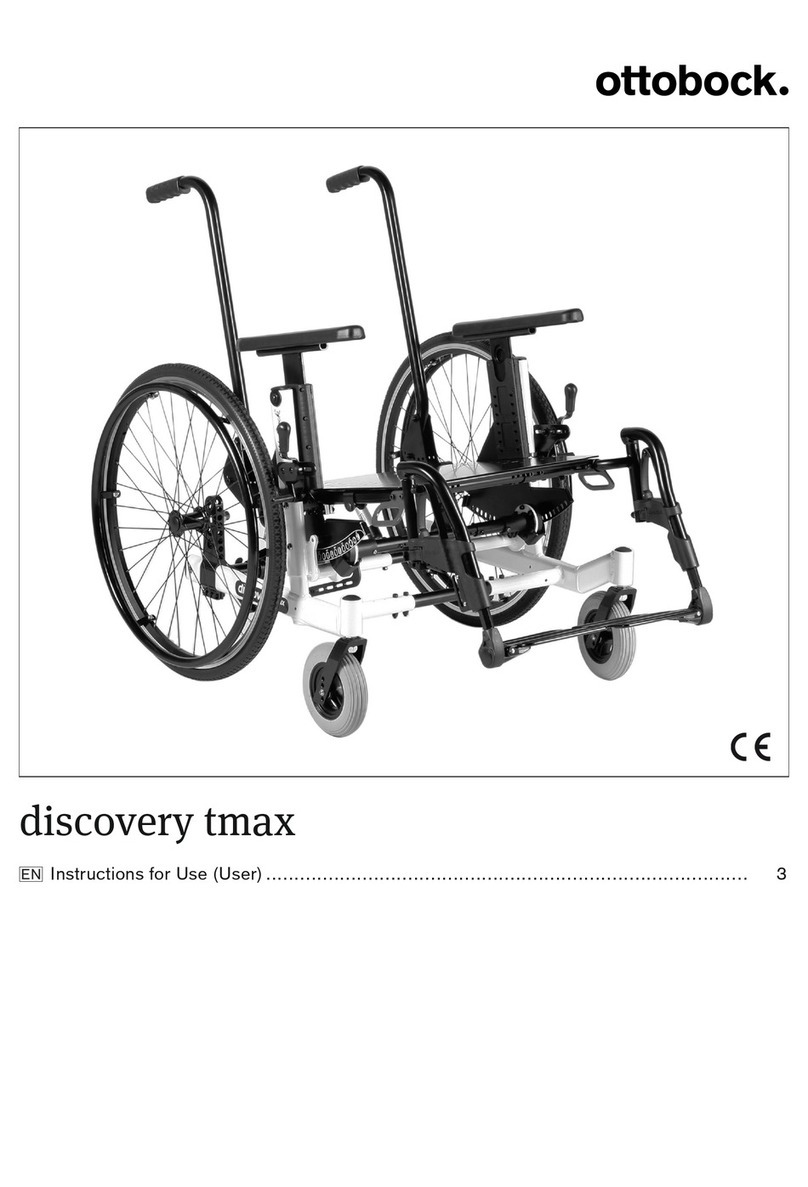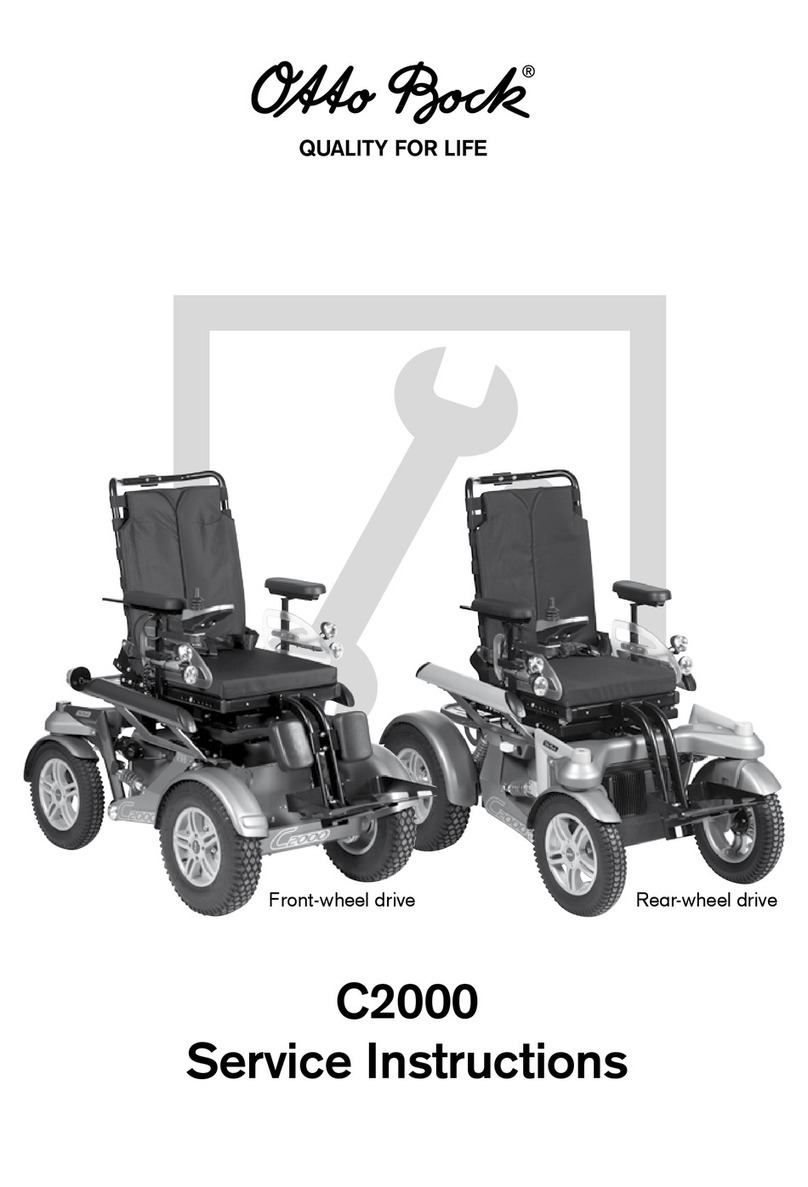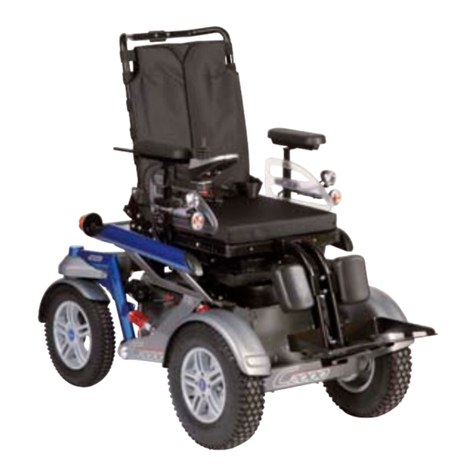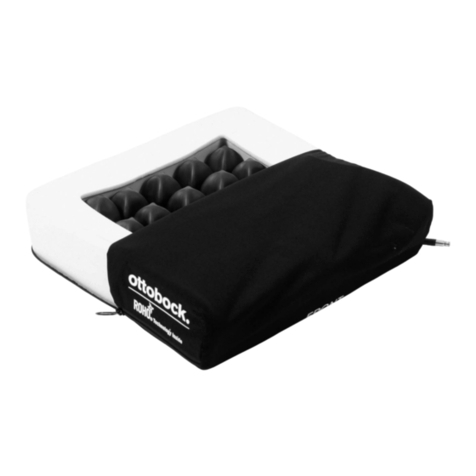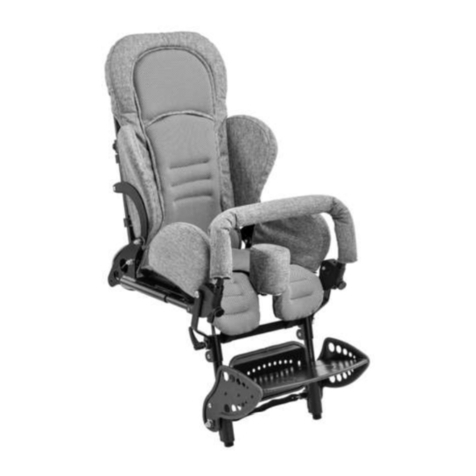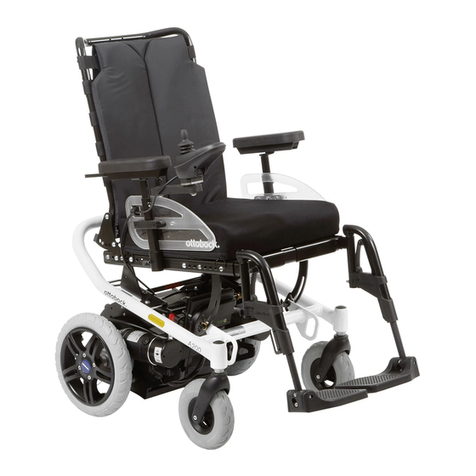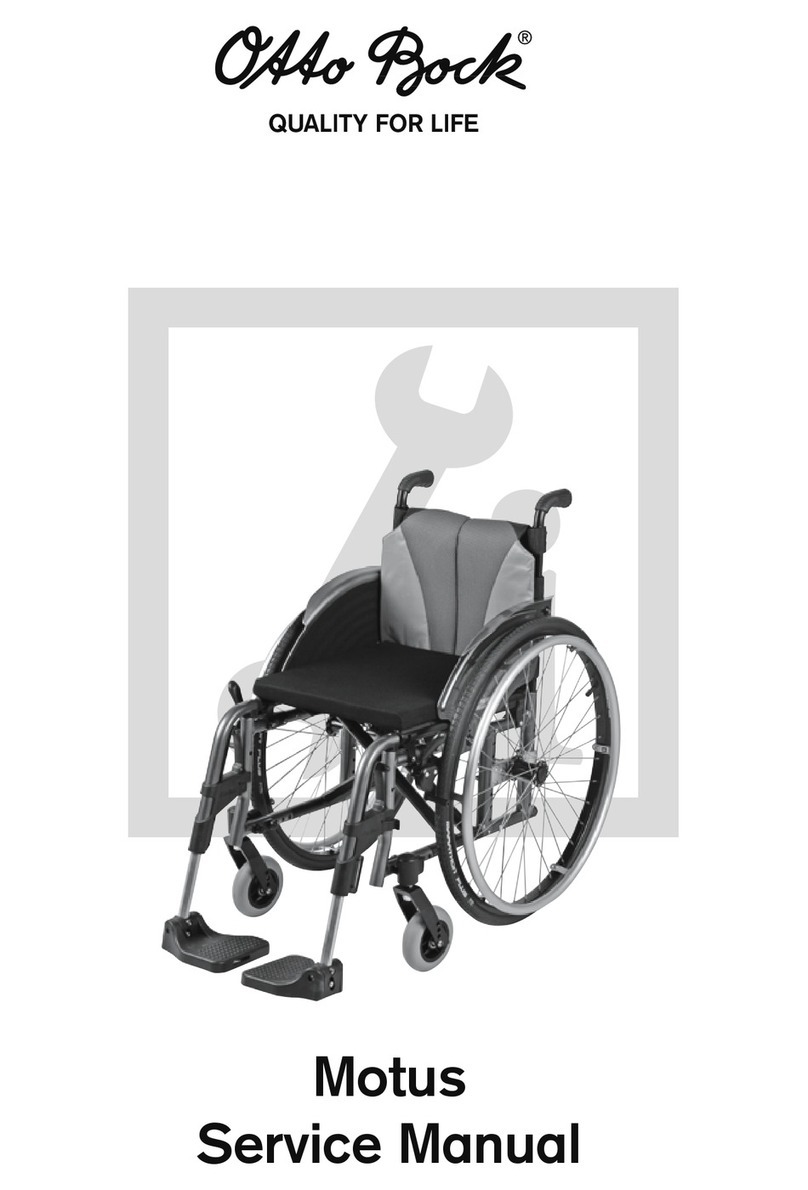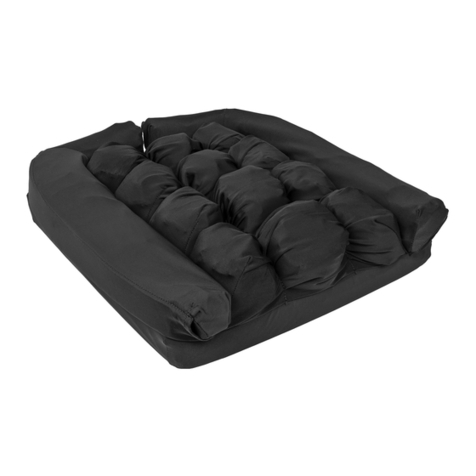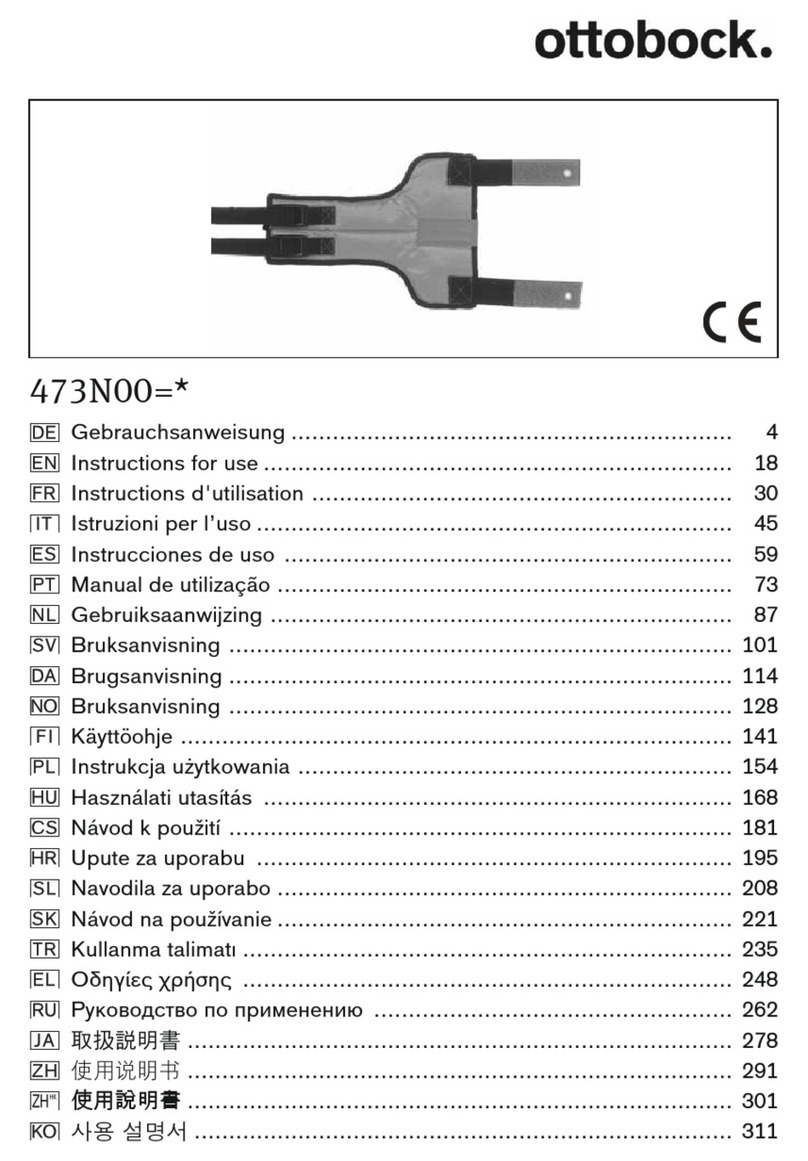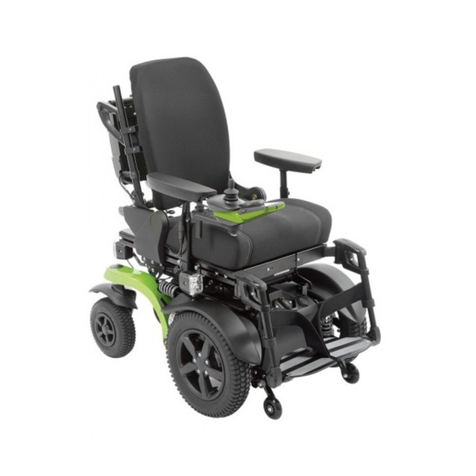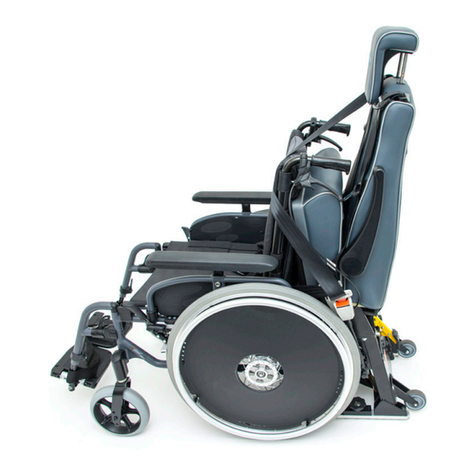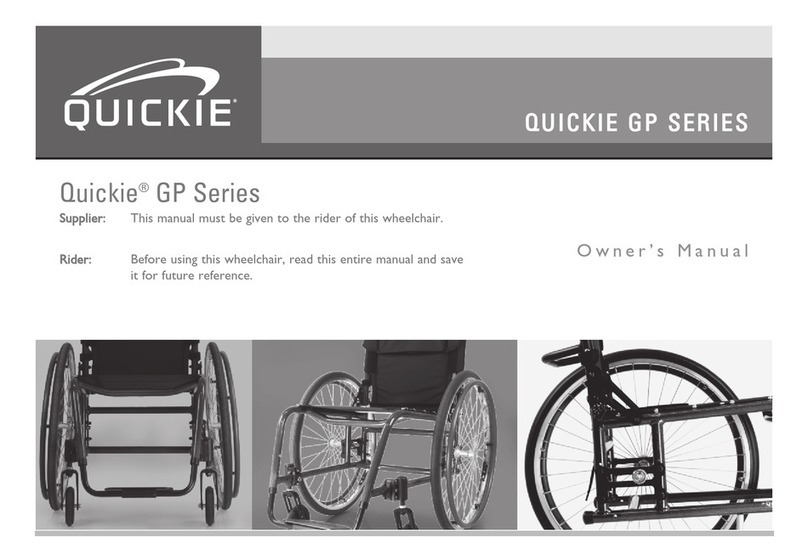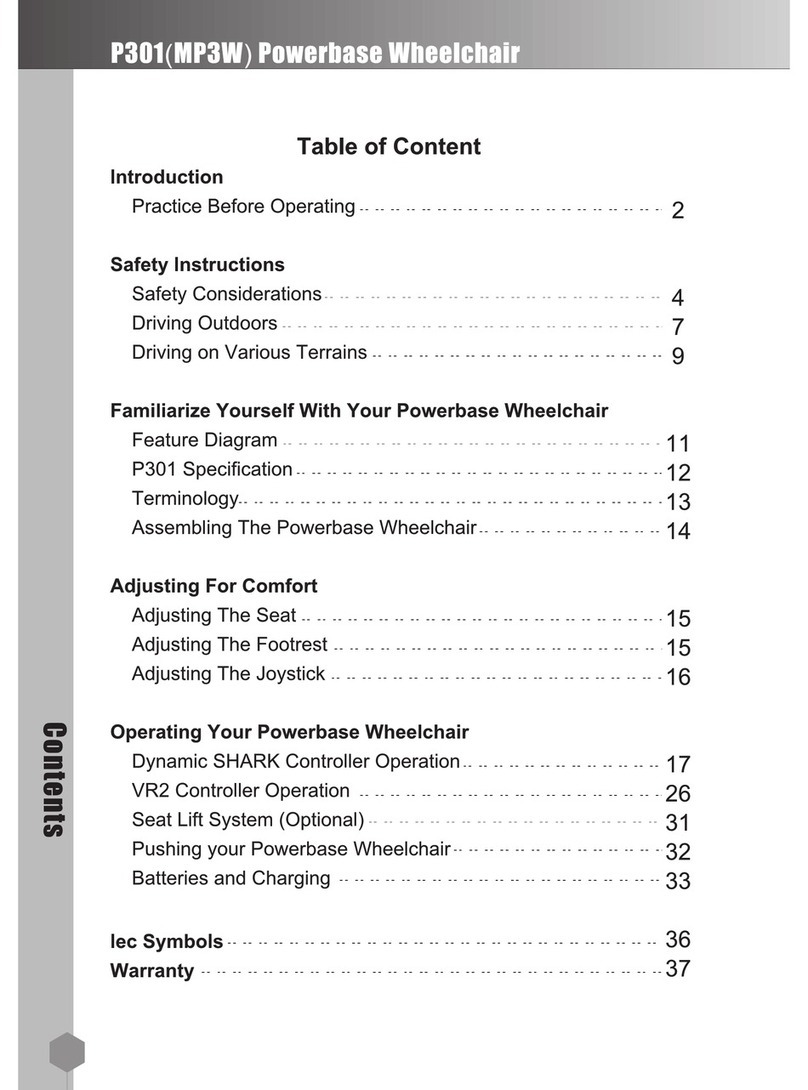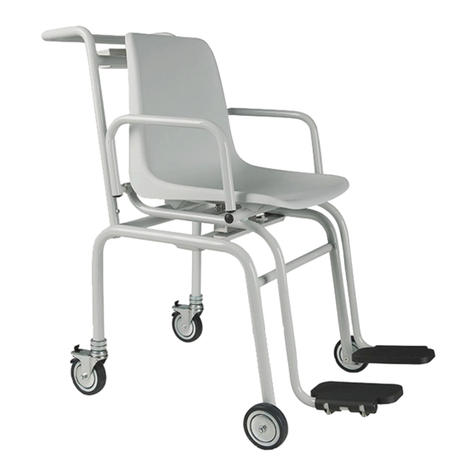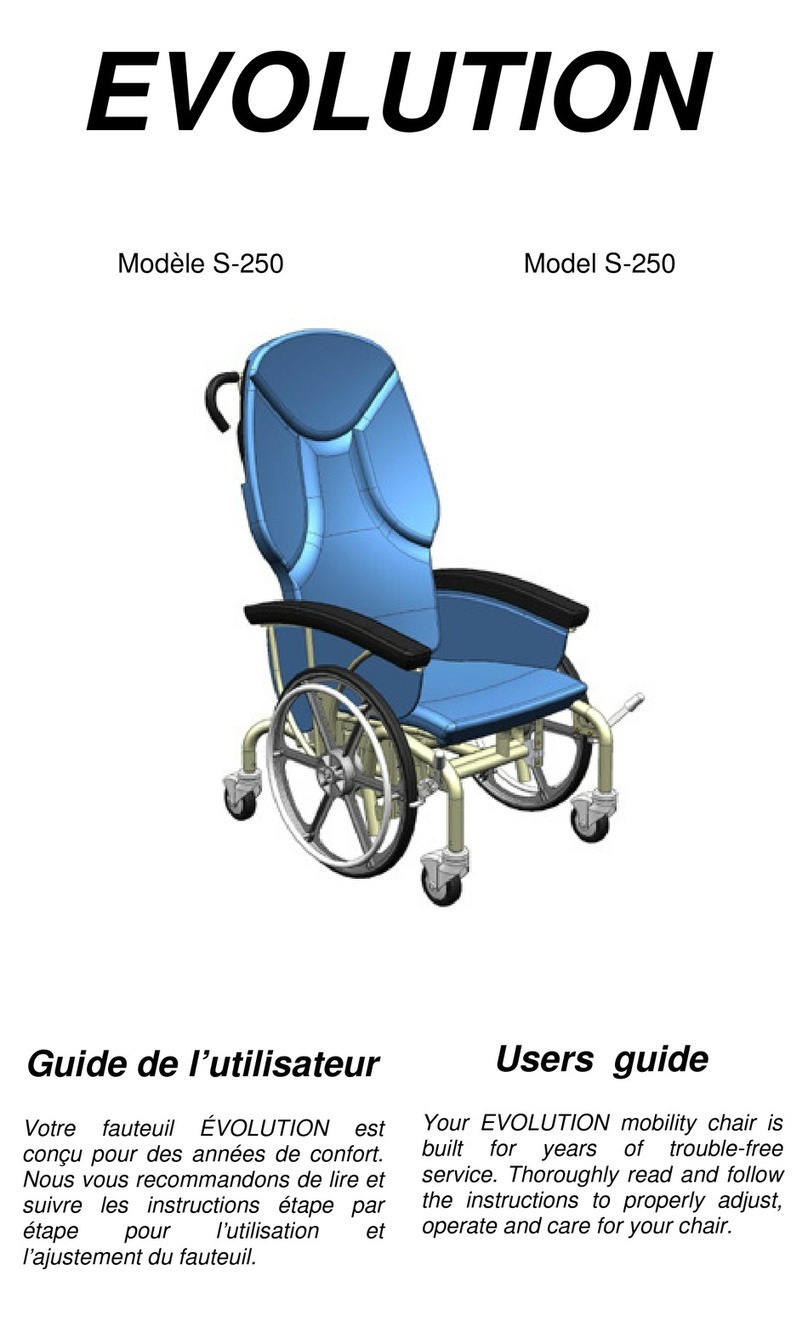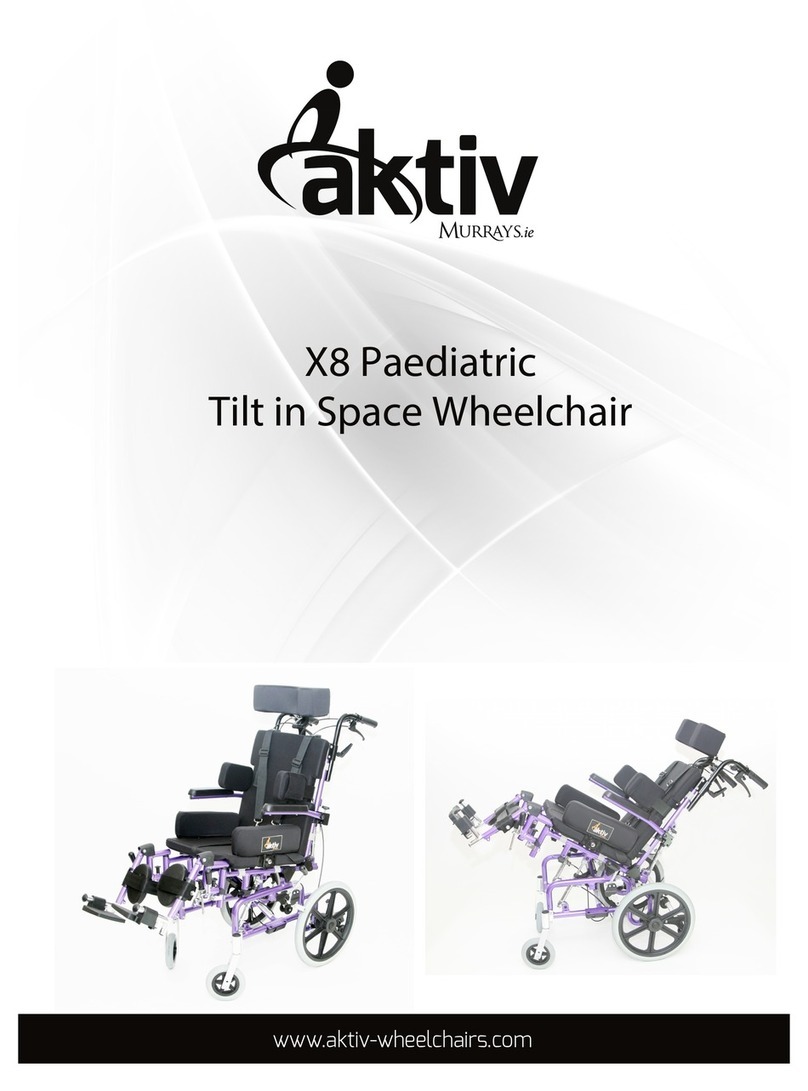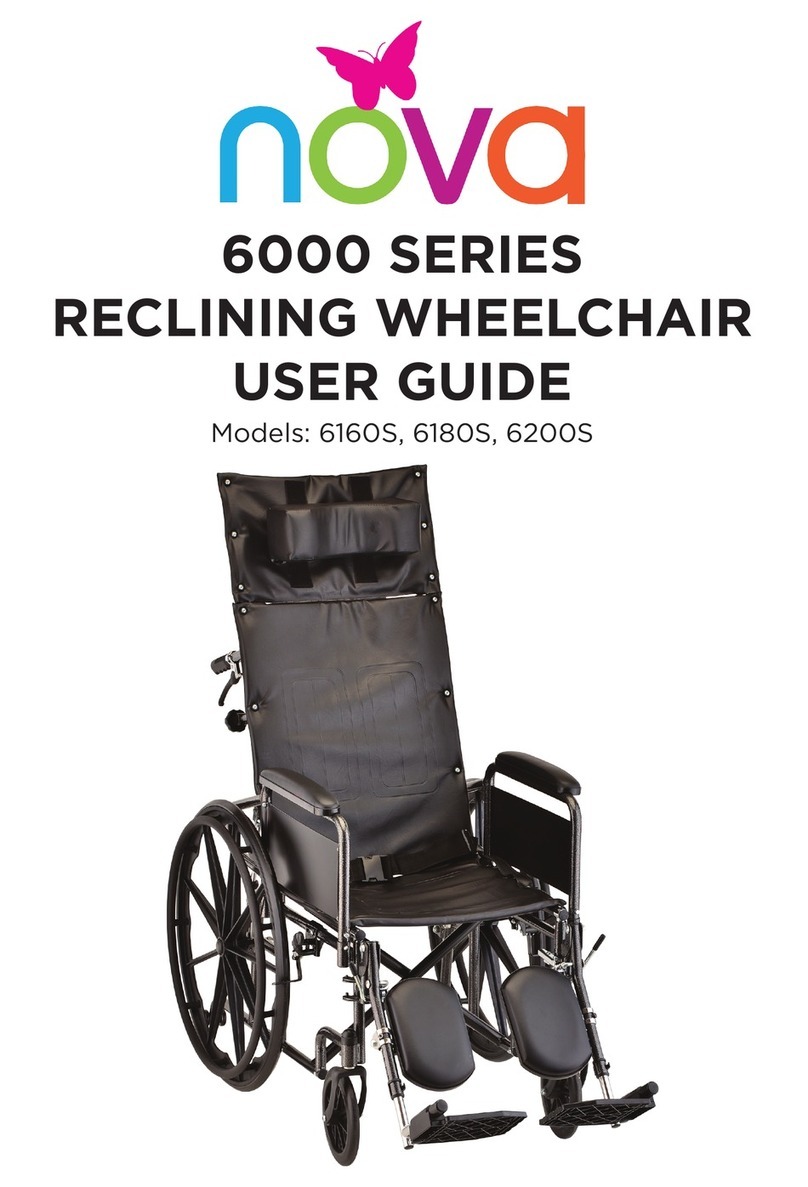Safety instructions
Skippi Plus Ottobock | 11
U
The interference (from radio wave sources) can cause the power wheelchair to release its
brakes, move by itself, or move in unintended directions.
UIt can also permanently damage the power wheelchair control system.
U
The intensity of the interfering EM energy can be measured in volts per meter (V/m). Each
power wheelchair can resist EMI up to a certain intensity. This is called its “immunity level”.
The higher the immunity level, the greater the protection. At this time, current technology is
capable of achieving at least a 20 V/m immunity level, which provides effective protection
from the more common sources of radiated EMI.
U
Thereareanumberofsourcesofrelativelyintenseelectromagneticeldsintheeveryday
environment. Some of these sources are obvious and easy to avoid. Others are not apparent
and exposure is unavoidable. However, we believe that by following the warnings listed below,
your risk to EMI will be minimized.
UThesourcesofradiatedEMIcanbebroadlyclassiedintothreetypes:
–
Handheld portable transceivers (transmitters-receivers) with the antenna mounted directly on
thetransmittingunit.Examplesinclude:citizensband(CB)radios,"walkietalkie,"security,
re,andpolicetransceivers,cellulartelephones,andotherpersonalcommunicationdevices.
INFORMATION
Some cellular telephones and similar devices transmit and receive signals while they are ON, even
when not being used;
– Medium-rangemobiletransceivers,suchasthoseusedinpolicecars,retrucks,ambu-
lances, and taxis. These usually have the antenna mounted on the outside of the vehicle.
–
Long-range transmitters and transceivers, such as commercial broadcast transmitters
(radio and TV broadcast antenna towers) and amateur (HAM) radios.
UBecause EM energy rapidly becomes more intense as one moves closer to the transmitting
antenna(source),theEMeldsfromhandheldradiowavesources(transceivers)areofspecial
concern. It is possible to unintentionally bring high levels of EM energy very close to the po-
wer wheelchair's control system while using these devices. This can affect power wheelchair
operation and braking.
U
Other types of handheld devices, such as cordless phones, laptop computers, AM/FM radios,
TV sets, CD and cassette players as well as small appliances such as electric shavers and hair
dryers, as far as we know, are not likely to cause EMI problems with your power wheelchair.
2.7.2 Warnings regarding effects of electromagnetic interference
WARNING
Risk of accidents due to uncontrolled driving behaviour. Electromagnetic interference (EMI) from
sources such as radio and TV stations, amateur radio (HAM) transmitters, two-way radios, and
cellular phones can affect power wheelchairs and motorized scooters. Following the warnings listed
below should reduce the chance of unintended brake release or power wheelchair movement which
could result in serious injury.























